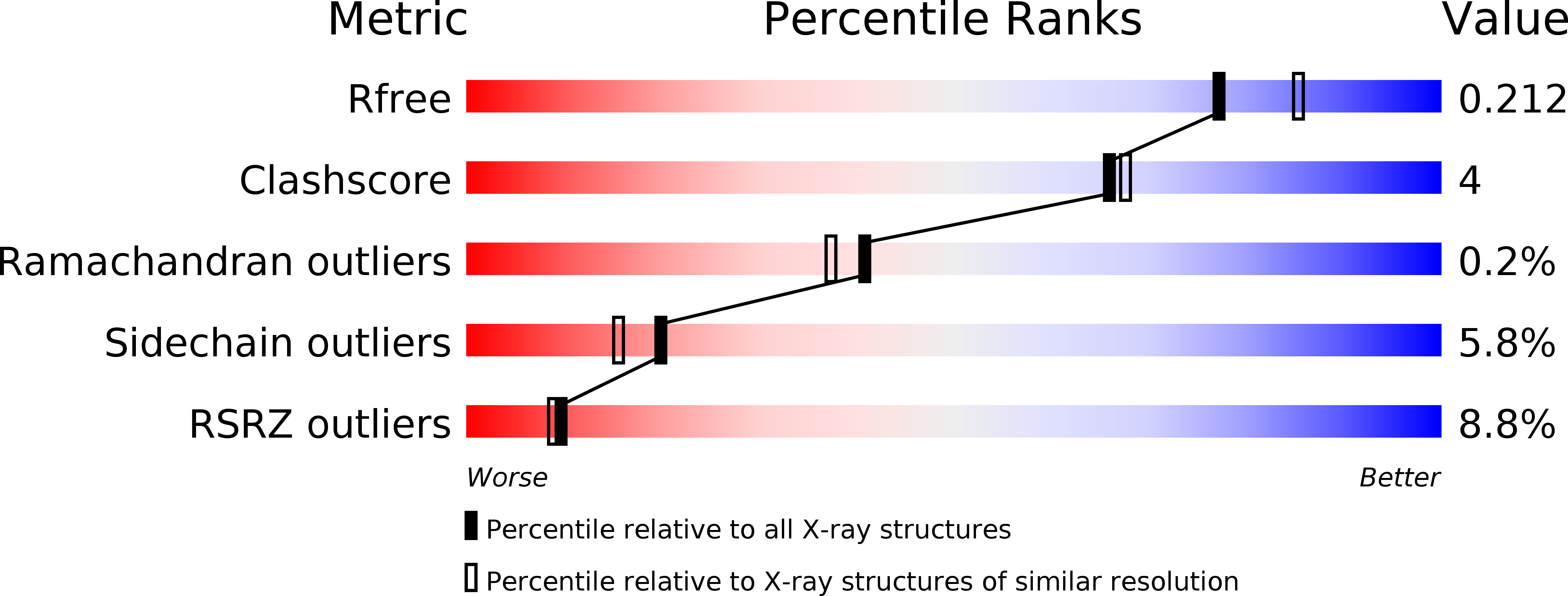Nitric Oxide Synthase Inhibitors that Interact with Both a Heme Propionate and Tetrahydrobiopterin Show High Isoform Selectivity.
Kang, S., Tang, W., Li, H., Chreifi, G., Martasek, P., Roman, L.J., Poulos, T.L., Silverman, R.B.(2014) J Med Chem 57: 4382
- PubMed: 24758147
- DOI: https://doi.org/10.1021/jm5004182
- Primary Citation of Related Structures:
4CTP, 4CTQ, 4CTR, 4CTT, 4CTU, 4CTV, 4CTW, 4CTX, 4CTY, 4CTZ, 4CU0, 4CU1 - PubMed Abstract:
Overproduction of NO by nNOS is implicated in the pathogenesis of diverse neuronal disorders. Since NO signaling is involved in diverse physiological functions, selective inhibition of nNOS over other isoforms is essential to minimize side effects. A series of α-amino functionalized aminopyridine derivatives (3-8) were designed to probe the structure-activity relationship between ligand, heme propionate, and H4B. Compound 8R was identified as the most potent and selective molecule of this study, exhibiting a Ki of 24 nM for nNOS, with 273-fold and 2822-fold selectivity against iNOS and eNOS, respectively. Although crystal structures of 8R complexed with nNOS and eNOS revealed a similar binding mode, the selectivity stems from the distinct electrostatic environments in two isoforms that result in much lower inhibitor binding free energy in nNOS than in eNOS. These findings provide a basis for further development of simple, but even more selective and potent, nNOS inhibitors.
Organizational Affiliation:
Department of Chemistry, Department of Molecular Biosciences, Chemistry of Life Processes Institute, Center for Molecular Innovation and Drug Discovery, Northwestern University , Evanston, Illinois 60208-3113, United States.





















